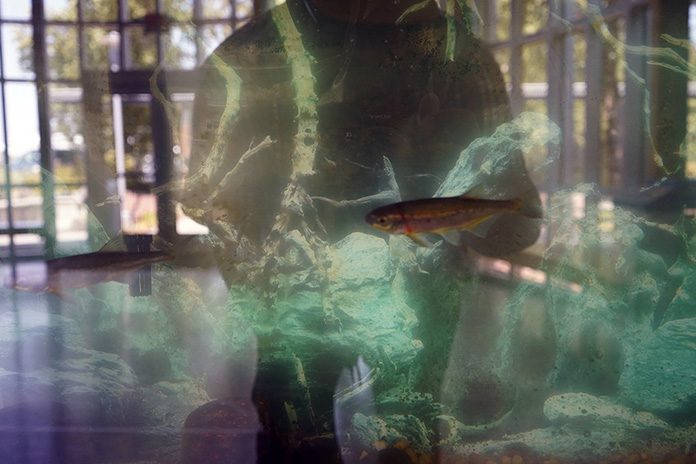
On July 25 the Confederated Tribes of the Umatilla Indian Reservation (CTUIR) received word from the U.S. departments of Commerce and Interior that it is receiving $2 million for its fish hatcheries that produce Pacific salmon and steelhead.
“The decades of backlogged and deferred hatchery maintenance has impacted many of the facilities’ ability to meet the mitigation goals that they were intended for, with many of the facilities not operating at full capacity,” Jerimiah Bonifer, CTUIR Department of Natural Resources (DNR) Fisheries Program manager, said. “Recognizing that over $1 billion in backlogged and deferred maintenance has been identified across the Columbia River and Snake River basins, we are excited to see this funding coming through to begin to address this critical issue and look forward to future opportunities to fund the additional maintenance needs.”
The news came as part of the two federal departments announcing a $240 million investment from President Joe Biden’s Investing in America agenda, which empowers tribal nations by supporting hatcheries that grow the two types of fish.
“Fish hatcheries in the Pacific Northwest support essential subsistence, ceremonial and economic benefits for tribal communities, as well as fulfilling treaty-reserved fishing rights,” the announcement states. “The Interior Department’s Bureau of Indian Affairs (BIA) will partner with the Commerce Department’s National Oceanic and Atmospheric Administration (NOAA) to deliver this funding to regional tribes.”
According to the announcement, an initial $54 million is available to 27 tribes in the Pacific Northwest and Alaska to address current hatchery facility maintenance and modernization necessities and to support tribal capacity needs.
Jen Krajcik, DNR artificial production supervisor, said the funds would be used at the CTUIR’s 11 artificial production facilities that help propagate the fish.
In the Umatilla River Basin, the CTUIR has the Three Mile Dam Adult Facility, Pendleton Acclimation Site, Minthorn Springs, Thorn Hollow Acclimation Site and Imeques Acclimation Site. In the Walla Walla River Basin, there are the ˀImtwaha Fish Hatchery and Nursery Bridge Dam Fish Ladder and Adult Trap. And in the Grande Ronde River Basin, there are the Catherine Creek Adult Trap, Catherine Creek Acclimation Site, Upper Grande Ronde Adult Trap and Upper Grande Ronde Acclimation Site.
“All of these facilities are relatively old and require annual maintenance and upkeep in order to use them each year,” Krajcik said. “Operating budgets have not kept up with the demand, and climate change and other outside factors have led to major maintenance needs and/or modernization requirements that we will use this funding to help address.”
Along with the CTUIR, the Confederated Tribes of Warm Springs, Yakama Nation and Nez Perce Tribe will also get $2 million each as part of the initial $54 million investment. Together the four tribes comprise the Columbia River Inter-Tribal Fish Commission.
The remaining $186 million will be made available competitively to tribes in the coming months to address the long-term viability and effectiveness of critical infrastructure for the propagation of Pacific salmon and steelhead.
“This is about really addressing deferred maintenance or modernization that could make a hatchery more efficient. It’s not necessarily funding for new facilities,” Jennifer Quan, NOAA Fisheries West Coast Region administrator, said. “We’re really looking at programs that repair and bring facilities into a state of function that helps support the tribes and for us to help the tribes meet their treaty obligations.”
The investments build on the Biden-Harris administration’s agreement to restore salmon in the Columbia River Basin and follows the Interior’s recently released report documenting the historic, ongoing and cumulative impacts of federal Columbia River dams on Columbia River Basin Tribes.
According to the U.S. government, millions of fish are produced in tribal hatcheries annually, driving tribal employment and subsistence, nutrition for tribal families and the preservation of cultural traditions and recreation. As habitat is restored and reconnected to better support natural fish production, hatcheries will remain a critical tool to supplement fish for tribal and non-tribal fisheries, as well as other salmon-dependent animals and ecosystems in the Pacific Northwest, the U.S. government states.








